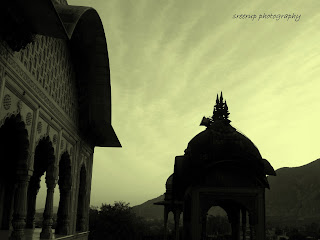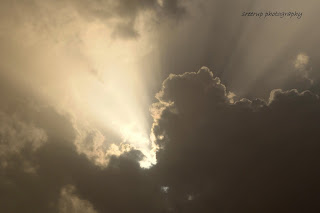 It was 12th August 2009 and i had just reach home from my work place. I asked rimi for going on a holiday. We then decided to go for Manali and reached Manali on 15th early morning. I was sleeping in the bus but suddenly i woke up hearing the ripple of river beas. The picturesque beauty of standing tall pine woods and the play of clouds in light and shadow with blinking sun makes me feel that i am in some new world away from busy city life. My wife was completely tired because of the overnight bus journey.We took room in lord regency hotel and the room was facing the river beas at the backdrop of dense pine wood. We took rest that day and then in the evening we went to Manali's the famous "Mall Road"
It was 12th August 2009 and i had just reach home from my work place. I asked rimi for going on a holiday. We then decided to go for Manali and reached Manali on 15th early morning. I was sleeping in the bus but suddenly i woke up hearing the ripple of river beas. The picturesque beauty of standing tall pine woods and the play of clouds in light and shadow with blinking sun makes me feel that i am in some new world away from busy city life. My wife was completely tired because of the overnight bus journey.We took room in lord regency hotel and the room was facing the river beas at the backdrop of dense pine wood. We took rest that day and then in the evening we went to Manali's the famous "Mall Road" 
The main market area of m Manali is known as Mall Road. Its is a straight road and shops are located on either sides. It is the main shopping attraction for tourists. The place gets crowded in the evening and one can buy shawls, Kullu caps, and other himachalli handloom staffs. Many hotels are on this road and thats why it is the busiest part of the town.Day two (16th August 2009)
We started our day by hiring a taxi from mall road and went for day long local sight seen. We first stopped at Tibetan Monastery which is situated at the middle of the town. We then continued our journe y up to Hidimba Temple.
y up to Hidimba Temple.
About Manali
 Manali is named after the Brahmin law-giver Manu. The word Manali literally means "the abode of Manu". Legend has it that sage Manu stepped off his ark in Manali to recreate human life after a great flood had deluged the world. The Kullu district of Himachal Pradesh in which Manali can be found is also known as the "Valley of the Gods". The Old Manali village has an ancient temple dedicated to sage Manu.
Manali is named after the Brahmin law-giver Manu. The word Manali literally means "the abode of Manu". Legend has it that sage Manu stepped off his ark in Manali to recreate human life after a great flood had deluged the world. The Kullu district of Himachal Pradesh in which Manali can be found is also known as the "Valley of the Gods". The Old Manali village has an ancient temple dedicated to sage Manu.
It is also believed that the Hidimba Devi lived in the jungles of Manali. The story of Hidimba Devi is recorded in Mahabharata, a famous holy book of the Hindus. The Hidimba Devi Temple in Manali is the most famous temple dedicated to Hidimba.The British introduced apple trees and trout, which were not native to Manali flora and fauna. It is said that when apple trees were first planted the fruits were so plentiful that often branches, unable to bear the weight, would collapse. To this day, apple - along with plum and pear - remains the best source of income for the majority of its inhabitants.
In the last 20 to 30 years Manali became famous and the town began to spread and grow in size. Initially there were only few shops and not a single hotel in Manali. Today, this once quiet village has transformed into a bustling town with many hotels and restaurants.
We came in the late evening to the hotel. Had spend the entire evening sitting at balcony with a glass of whiskey ,hearing the wavy sound of river beas and gleaming reflection of moonlight on the flowing water.
 Day three (17th August-2009): Rohtang PassWe started our journey at 10:00 hrs and reached rohtang pass at 14:30 hrs.
Day three (17th August-2009): Rohtang PassWe started our journey at 10:00 hrs and reached rohtang pass at 14:30 hrs.About Rohtang Pass
The pass provides a natural divide between the sub-humid/humid Kullu Valley with a primarily Hindu culture (in the south), and the arid/semi-arid high-altitude Lahaul and Spitivalleys with a Buddhist culture (in the north). The pass lies on the watershed between theChenab and Beas Basins. On the southern side of this pass, the Beas River emerges from underground and flows southward and on its northern side, the Chandra River, a source stream of the river Chenab, flows westward. The pass is open from May to November. It was not particularly high or difficult to cross on foot by Himalayan standards, but it had a well-deserved reputation for being dangerous because of unpredictable snowstorms and blizzards.




































